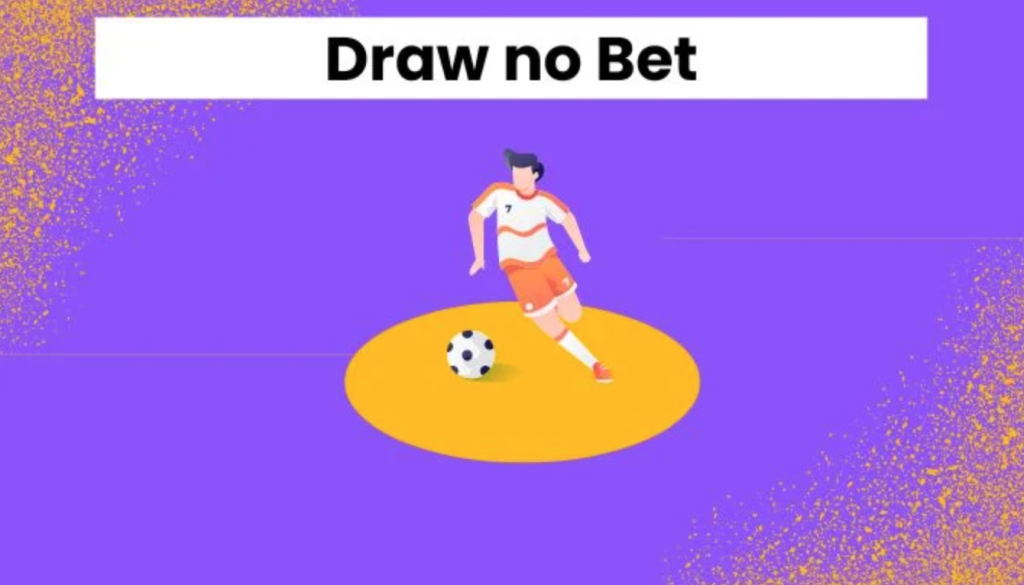
Understanding Draw No Bet (DNB)
The Draw No Bet (DNB) option eliminates the possibility of a draw, focusing solely on picking a winner. If your chosen team loses, you lose the bet; however, if the match ends in a draw, your stake is refunded according to the bookmaker’s policies. This form of betting typically offers lower odds compared to betting on a match winner, due to the reduced risk.
In DNB, the traditional 3-way betting option is converted into a 2-way betting option by removing the draw outcome. This requires you to pick matches where a win is crucial. Simply knowing how DNB works isn’t enough; you need additional information to make informed bets. This article delves into the mechanics of the DNB, the cover bet strategy, and other related markets.
How Draw No Bet Works
Numerous articles explain the DNB, but they converge on the same principle: if your chosen team wins, you win the bet; if the team loses, you lose the bet. If the match ends in a draw, your stake is refunded, since neither a win nor a loss occurs. This safety net results in slightly lower odds compared to regular bets, as the stake is effectively split into two possible outcomes.
The DNB is considered a safe betting method in football, particularly in matches where a decisive result is expected, such as finals. Here, a winner must be determined by the end of regular time. Extra time is generally not included in DNB wagers, so if a match draws in regular time, your stake is refunded.
Alternative to DNB – The Asian Handicap 0.0
Many punters compare the Asian Handicap 0.0 to the DNB, but they are not identical. The Asian Handicap focuses on numerical values rather than the traditional 3-way bet. Despite this difference, the odds for Asian Handicap are slightly higher than those for DNB, making it potentially more profitable.
In Asian Handicap, the underdog is given a goal advantage, even if the favorite wins. Depending on the bookmaker, the Asian Handicap generally offers a smaller commission, beneficial for both European and Asian betting markets.
Creating Your Own Draw No Bet
Bookmakers offer various markets to cater to the diverse preferences of punters. You can leverage this by creating your own DNB. To do this, place equal amounts on both the selected team and a draw. This method splits your stake according to the draw odds, which can be calculated as stake divided by draw odds.
For example, if you have £100 to bet on a match between Manchester United and Liverpool with odds of home (2.00), draw (3.30), and away (2.40), you can calculate the stakes for each bet type. Subtract the amount from the initial stake and place the rest on the favored team to win.
If the match ends without a winner, your money is refunded similarly to the DNB option. However, this method is less popular now, as it is time-consuming and requires precise calculations to balance the odds. Modern bookmakers offer DNB odds close to what punters calculate, reducing the workload considerably.
Creating your own bets on draws can mitigate the 5% bookmaker’s over-round odd sets and apply to both home or away no bet options. Always back your selections with thorough pre-match analysis for the best results.
Does Draw No Bet Include Extra Time?
The answer is a resounding no. Typically, the Draw No Bet (DNB) option applies only to the regular 90 minutes of play, excluding extra time. Some online betting providers might offer no draw bet options during extra time, but this is uncommon. Extra time bets are generally relevant only in final championship matches where a winner must be determined. In such cases, if the match is drawn during extra time, you lose the bet, as the draw scenario does not apply.
What Happens to DNB in an Accumulator?
In an accumulator bet, which combines multiple selections into one bet, the outcome of each selection impacts the overall result. If one of the matches ends in a draw and you had a DNB bet on it, that specific match is considered void. This means that the accumulator will continue without the voided match, and your potential winnings will be adjusted accordingly. Different bookmakers offer varying ratios on how they handle void bets in accumulators.
Difference Between Double Chance and Draw No Bet
The Draw No Bet cushions your bet on two possible outcomes: a win or a loss. If the match ends in a draw, you get your stake back. On the other hand, the Double Chance option allows bettors to choose two potential outcomes from the full-time result (win/draw or draw/lose). However, unlike DNB, the double chance option does not offer a return on stake for a draw, meaning you lose your entire stake if neither of the selected outcomes occurs.
The Cover Bet Strategy
The cover bet strategy involves identifying matches where a draw is possible, but a win is the most likely outcome. Equally matched teams are often prime candidates for DNB bets. Bookmakers introduced the draw no bet option after observing that punters frequently placed two separate bets on the same game—a win and a draw.
When using this strategy, choose matches where a DNB is more favorable than a straight win bet. Match statistics are crucial, providing insights into the likelihood of different outcomes. Experienced punters often prefer the DNB option based on detailed information and analysis.
In summary, while the Draw No Bet does not include extra time and typically applies only to the 90 minutes of regular play, it offers a safer betting strategy by eliminating the risk of a draw. When used in accumulators, DNB bets can void a match, adjusting potential winnings. Understanding the differences between DNB and double chance bets and employing strategies like the cover bet can enhance your betting experience and increase your chances of success.







